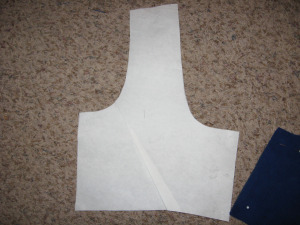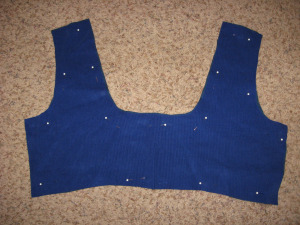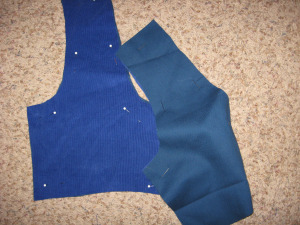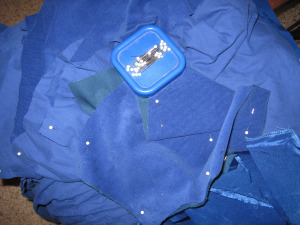1490s Venetian “mockado” gown, part II
Step three: build the gown utilizing “mockado” fabric.
But wait — what IS “mockado”?
The term “mockado” is used to indicate a substitute fabric for a more expensive material; in period, it was used most often to indicate a substitute for velvet. Velvet (much as it is today!) is a very expensive fabric — in the Renaissance, it would have only been available to the wealthy nobles… but fashion is fashion, and the middle class (lesser nobles, wealthy merchants, etc) did what they could to keep up appearances.
In this case, they would substitute a fabric they could afford that would approximate the look of the more expensive velvet — most often fine wale corduroy.
My first real issue with building this gown was the fact that I had to alter a critical piece of the pattern: the front part of the bodice. For all that this Simplicity pattern does right, it does do a couple things wrong, namely adding darts for shaping over the bust. Unfortunately, darts are pretty much a modern invention; in the Renaissance, tailors relied on the drape and cut of the fabric for fitting. I did a simple Google search for “drafting out darts,” traced a copy of my pattern piece onto a hunk of butcher paper, and followed the directions.
 Drafting out the dart changed the line of the bodice; at this point I’m not certain it’s enough of a change for the right fit, but since I’m going to be modifying the construction by adding lacing to allow for breastfeeding (crossing my fingers!), I’m not terribly concerned at the moment.
Drafting out the dart changed the line of the bodice; at this point I’m not certain it’s enough of a change for the right fit, but since I’m going to be modifying the construction by adding lacing to allow for breastfeeding (crossing my fingers!), I’m not terribly concerned at the moment.
 Per historical custom, I lined the bodice with a canvas for stiffening. The inside of the dress will be lined entirely with a shiny taffeta that matches the mockado corduroy.
Per historical custom, I lined the bodice with a canvas for stiffening. The inside of the dress will be lined entirely with a shiny taffeta that matches the mockado corduroy.
 Next step, on to the skirt and assembly!
Next step, on to the skirt and assembly!
Tagged: mockado, Renaissance, sca, Sewing, Society for Creative Anachronism





